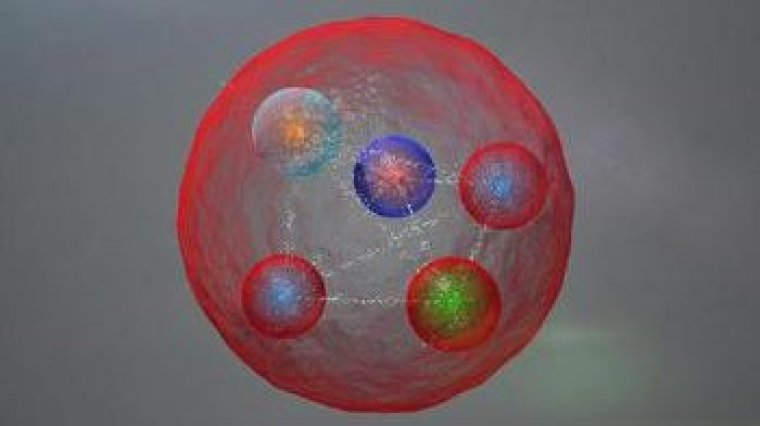| News / Science News |
Physicists discover long-sought 'pentaquark' particle
NSF | JULY 19, 2015
CERN's Large Hadron Collider announced that researchers discovered a remarkable class of particles known as pentaquarks that could reshape scientists' understanding about the properties of matter.

Physicists discover long-sought 'pentaquark' particle. ![]()
Physicists have been searching pentaquarks for almost 50 years, but the research group that made the discovery, a Syracuse University team, wasn't specifically looking for them.
Atoms, and the protons and neutrons that make up their nuclei, are familiar terms in science. But quarks are even smaller particles--the building blocks of protons, neutrons and other subatomic particles known as baryons.
Baryons, including protons and neutrons, are composed of three quarks. A pentaquark is something different--a "composite state" that groups four quarks and one antiquark, the associated antimatter particle for a quark. Studying composite states can give scientists additional insight into the properties of ordinary baryons.
The discovery was made by the CERN Large Hadron Collider b-quark (LHCb) experiment group, one of several ongoing particle physics experiments at the laboratory. LHCb studies antimatter and its relationship to matter.
The pentaquark is not just any new particle. It represents a way to aggregate quarks, namely the fundamental constituents of ordinary protons and neutrons, in a pattern that has never been observed before in over fifty years of experimental searches. Studying its properties may allow us to understand better how ordinary matter, the protons and neutrons from which we're all made, is constituted.
YOU MAY ALSO LIKE


